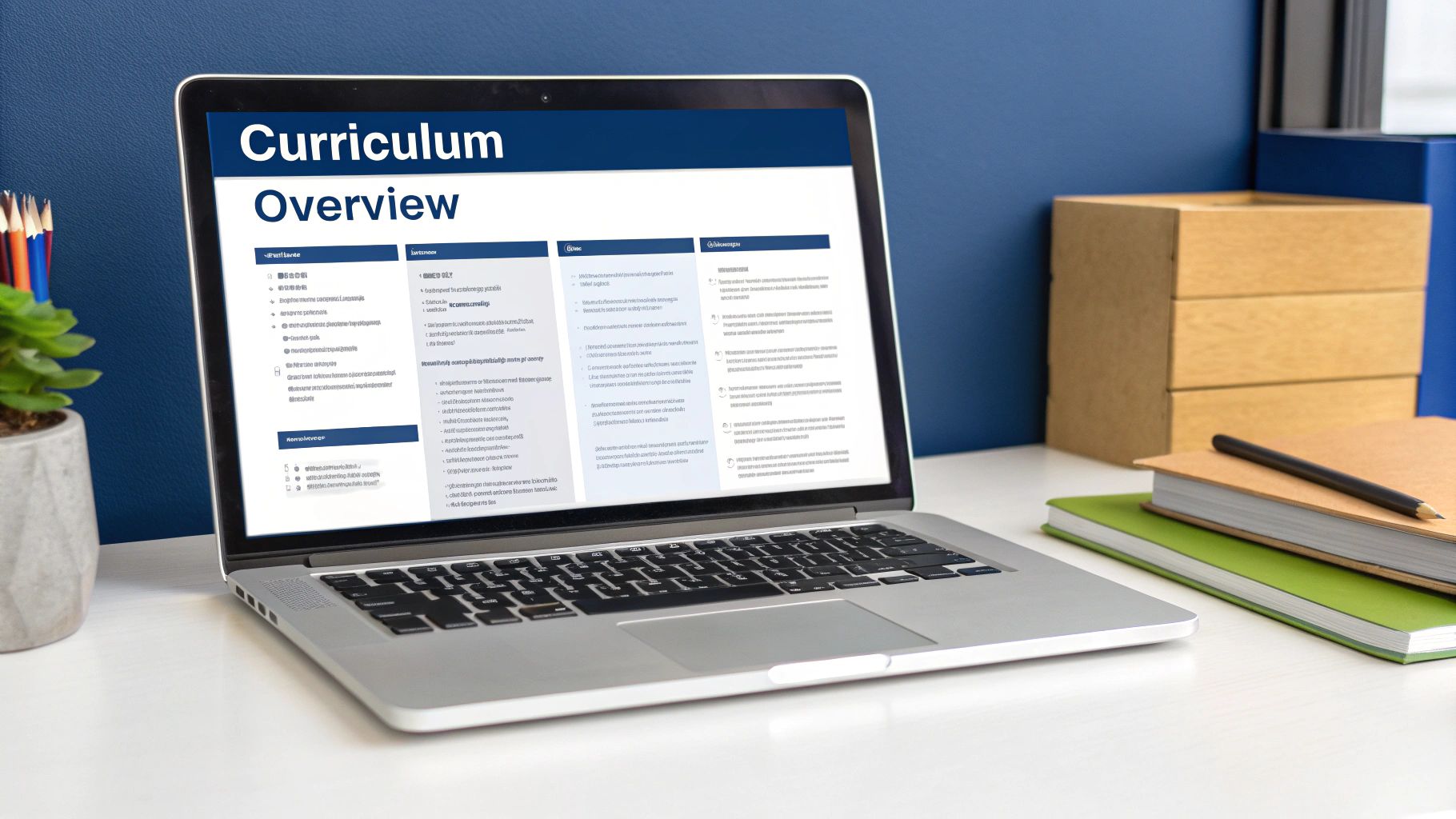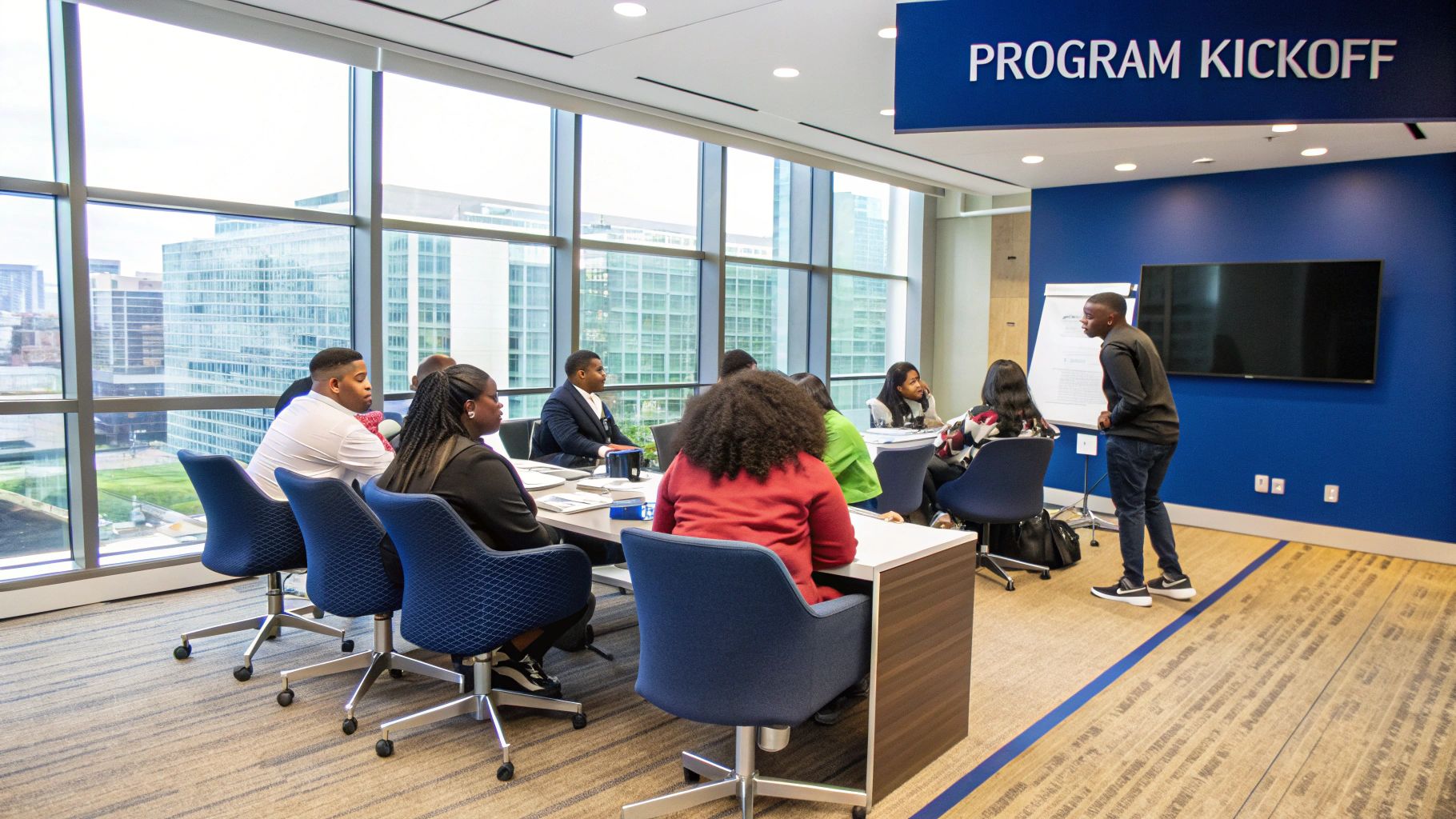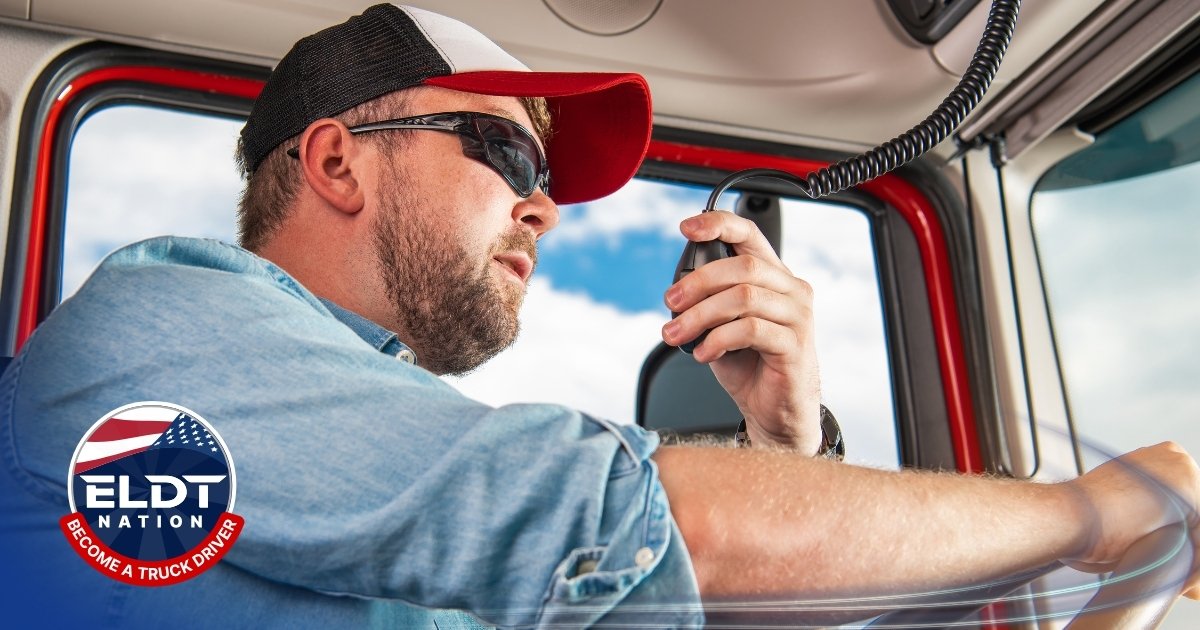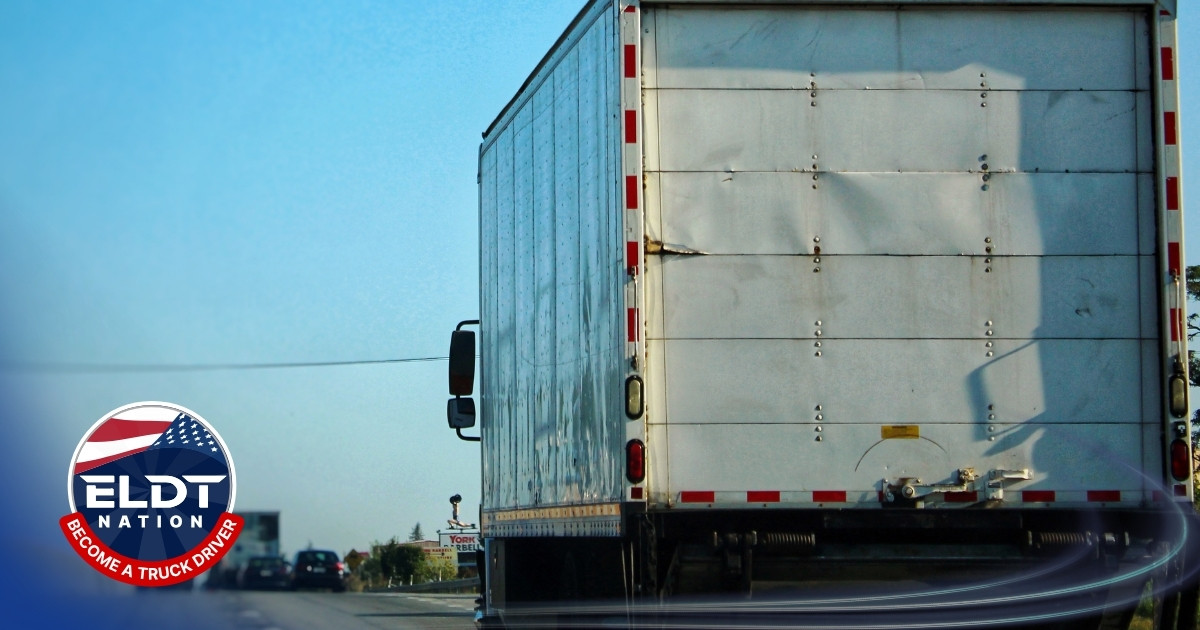Your Guide to the Entry Level Training Program | Start Your Trucking Career
Think of the Entry-Level Driver Training program as the new "driver's ed" for getting a commercial license. The government (FMCSA) made this a rule to make sure every new driver learns the same safety skills. This isn't just more paperwork. It's about making the roads safer for everyone.
Why the Entry-Level Training Program Exists
Before this rule, training for new truckers was all over the map. One school might give you great training. Another might cut corners. This left some new drivers unprepared for a tough job. There was no single standard.
The FMCSA stepped in to fix this. They set one national standard for skills and safety. The goal is simple: make sure every new trucker learns the same key information, no matter where they train. You'll learn the rules of the road and how to handle a big rig in bad weather.
This program is more than just passing a test. It’s about building a solid foundation of knowledge to keep our roads safe.
Who Needs to Complete This Training?
So, does this rule apply to you? It's pretty simple. The ELDT rules are for new drivers or drivers who want to upgrade their license.
You must complete an approved entry-level training program if you are:
- Getting a Class A or Class B Commercial Driver's License (CDL) for the first time.
- Upgrading an existing Class B CDL to a Class A CDL.
- Getting a School Bus (S), Passenger (P), or Hazardous Materials (H) endorsement for the first time.
If you already had your CDL or these endorsements before February 7, 2_022, you're good. This rule is for new drivers moving forward.
A New Standard for Driver Readiness
The trucking industry needs a steady flow of good drivers. Finding well-trained people is a big challenge. One survey found that 77% of companies in all fields had trouble finding workers. This shows why good, standard training is so important. You can explore the broader recruitment trends to see how big a deal this is.
The ELDT program is trucking's answer. It makes sure that "entry-level" doesn't mean "unprepared." When you finish this training, you're showing you have the knowledge to drive a rig safely and professionally.
The big idea behind ELDT is to set a safety standard for everyone. Every new driver starts their career with the same basic understanding of safety and how to operate the truck.
This helps everybody. It gives you the confidence that you were taught the right stuff. It also tells companies they are hiring drivers who meet a clear national standard.
Not sure if you need the training? This quick guide will help.
Quick Guide: Who Needs ELDT Training?
This table shows exactly who needs to complete the Entry-Level Driver Training program.
Basically, if you're taking a step up in your trucking career, ELDT is a required step.
What You Actually Learn in ELDT - Entry Level Training Program Curriculum

So you know you need to do an entry-level training program. But what does that really mean? Let's skip the government talk and look at what you'll actually learn.
The ELDT program is split into two parts: theory training and behind-the-wheel training. It's like learning to cook. First, you read the recipe and learn the basics (theory). Then, you get in the kitchen and start cooking (behind-the-wheel). You need both to be a pro.
The Classroom Stuff: Theory Training
This is the "book smarts" part. Before you turn the key, you have to know the rules. This part is all about understanding the laws and your responsibilities as a professional driver.
You’ll cover a lot of topics, but here are some of the big ones:
- Hours of Service (HOS): This is a huge deal. You’ll learn the strict rules on how long you can drive and when you must rest. You'll also learn how to log it all legally.
- Vehicle Systems: You'll get to know your rig inside and out. This covers the air brake system, engine, and electrical parts. That way, you can spot a small problem before it becomes a big one.
- Safe Operating Procedures: This is about handling a huge truck in the real world. You’ll learn to manage your speed and space, deal with things like snow or high winds, and react safely in emergencies.
- Cargo Securement: Driving is only half the job. You’ll learn how to properly tie down your load so it stays put.
Many schools, including ELDT Nation, offer this theory part online. This lets you study on your own time, from anywhere. You can check out our Class A CDL Theory course to see how it works.
Getting Your Hands on the Truck: Behind-the-Wheel Training
After you pass the theory part, it's time for the fun stuff—getting in the driver's seat. This is where all that book learning comes to life. A certified instructor will be right there with you as you practice.
This hands-on training happens in two places.
First is range training. This happens in a controlled area, like a big empty lot. It’s your practice field. You can learn the basic moves without dealing with traffic. You’ll master skills like:
- Pre-Trip Inspections: Learning the walk-around to check every key part of your truck and trailer before you roll.
- Backing Maneuvers: You’ll practice all the key backing skills—straight-line, offset, and the dreaded alley dock—over and over.
- Coupling and Uncoupling: Safely hooking and unhooking a trailer is a skill you'll use all the time.
After you get good on the range, you'll move to on-road training. This is where the rubber really meets the road. You'll be out on public streets and highways with your instructor. You'll deal with real traffic, intersections, and merging.
This is your chance to build the confidence you need to pass your CDL test and start your career.
How to Find an Approved Training Provider

Okay, you know you need an ELDT program. That's the first step. The next big step is finding a good school that's worth your time and money. Not all schools are the same. Picking the right one can make a huge difference for your career.
The good news is the government gives you a place to start. Your search for a school should start and end with the FMCSA Training Provider Registry (TPR). This is the official list of every approved school and instructor in the country.
If a school isn't on the TPR, your training won't count. It’s that simple. You must use a school from this list for your training to be valid.
This list protects you. It's the only way to know for sure that a school meets the government's standards.
Using the Training Provider Registry
The TPR website is a simple search tool. You don't have to guess if a school is legit. You can look it up yourself in a few minutes.
Here’s how to use it:
- Go to the official FMCSA TPR website.
- If you have a school in mind, search for it by name.
- If not, search for trainers near you by putting in your city and state.
- The results will show you a list of all approved trainers in your area.
This list puts the power in your hands. You can find a certified provider that has been checked out by the FMCSA.
What to Look for Beyond the List
Just because a school is on the official list doesn't mean it's the best one for you. The TPR just means the school meets the minimum rules. You should do a little more homework to find a really good program.
You're investing in your future, so ask the right questions. Before you sign anything, dig a little deeper. A good school will be happy to answer your questions. For a detailed breakdown of different kinds of programs, you can read our guide on choosing between various CDL training programs.
Here’s a checklist of what to ask:
- Student-to-Instructor Ratio: How many students are in the truck with one instructor? A smaller ratio, like 3-to-1, means you get more one-on-one help and more time driving.
- Quality of Equipment: Are the training trucks old junkers, or are they modern and in good shape? You want to learn on trucks like the ones you'll actually drive.
- Job Placement Help: Do they help you find a job after you graduate? A good school has connections with trucking companies and will help you with applications.
- Full Program Cost: Get a full breakdown of all costs in writing. Are there hidden fees for books, drug tests, or the CDL exam? Get the total price before you commit.
How to Pay for Your CDL Training
Alright, let's talk about the cost. A good entry level training program is an investment. The good news is you have options. Seeing the price for CDL school can be a shock, but it doesn't have to stop you.
The cost of truck driving school varies. A school in a big city might cost more than one in a small town. The program's length and the quality of the trucks also affect the price. Most full-time programs cost somewhere between $3,000 and $10,000.
Before you worry about the price, know that there are ways to pay for it. One of them will probably work for you. Let's look at the most common ways to pay.
Paying Out of Pocket
This is the simplest way. If you have the savings, paying for school upfront means you start your career with no school debt. You'll have the freedom to choose any company you want to work for.
This is a great option if you want to be independent. You won't be tied to a company contract. You can go after the best jobs and best pay right away.
Using Loans or Financial Aid
Don't have a pile of cash? No problem. Getting a loan is a very common way to pay for school. Many truck schools have connections with lenders who offer loans for trade schools.
It’s also worth looking for other financial aid. Check for state or federal grants that help people get skills for in-demand jobs. Trucking is definitely on that list.
Finding Company-Sponsored Training
This is a very popular option, and for a good reason. Many big trucking companies will pay for your CDL training. The catch? You agree to work for them for a set time, usually about a year. It's a great deal. You get your training for free, and you have a job waiting for you.
Think of it as the company investing in you. They need good drivers and are willing to pay for your school to get you on their team. Just make sure you read the contract carefully so you know what you're agreeing to. If you leave before the contract is up, you'll likely have to pay them back.
Company-sponsored training is a good choice if you need to get on the road fast without paying upfront. It gives you both the training and a job.
Other Funding Options for Your Training Program
Don't forget to look for programs for your specific background. For military vets, the GI Bill® can be a huge help. A lot of truck driving schools are approved to take these benefits. They can cover most, if not all, of your tuition. It's an earned benefit that can give you a great start in a new career.
No matter your money situation, there's a way to do this. The key is to do your homework and find the option that works best for you.

Choosing the Right Online Theory Course
One of the best things about the new ELDT rules is that you can do the whole theory part online. This lets you study whenever you want, wherever you want. It's a huge plus if you have a busy schedule.
Picking the right online course for your entry-level training program is like picking a good tool. You want one that’s reliable, easy to use, and gets the job done right. A good online course doesn't just help you pass your permit test. It gives you a strong base of knowledge you'll use every day.
Make Sure They're on the List
First things first: the school must be on the FMCSA’s Training Provider Registry (TPR). This is a must. If you take a course from a school that isn't on this official government list, your training won't count. It's like using the wrong map. You can do all the work, but you won't get where you need to go.
Before you look at prices or features, go to the TPR website and check that the school is listed. This is your first and most important step.
What Makes a Good Online Course?
Once you know a provider is on the TPR, you can see if their program is a good fit. Not all online courses are the same. You want a program made for truckers, not computer experts.
Here’s a simple checklist to help you choose:
- Easy to Use: The website or app should be simple. Can you find your lessons easily? If it’s confusing, you’ll just get frustrated.
- Works on Your Phone: You'll probably do a lot of studying on your phone. Make sure the course works well on a small screen.
- Good Reviews: What are other students saying? Look for reviews. Hearing from other drivers who took the program is a great way to know if it's any good.
- Clear and Simple Content: The lessons should be easy to understand. A good program breaks down complicated rules into simple ideas you can use. Our guide on what to expect from online CDL training can give you a better idea of what a good course looks like.
Choosing the right online provider is about more than just checking a box. It’s about finding a partner that truly gets you ready for the road with clear, simple, and quality training.
Your online theory course is the first big step in your driving career. Taking time to pick a good one will set you up for success.

Ready to take the first step toward your new career? At ELDT Nation, we provide an FMCSA-approved online theory course that’s simple, affordable, and designed to get you on the road fast. Our self-paced program works on any device, so you can learn on your schedule. Start your journey today at https://www.eldtnation.com.







